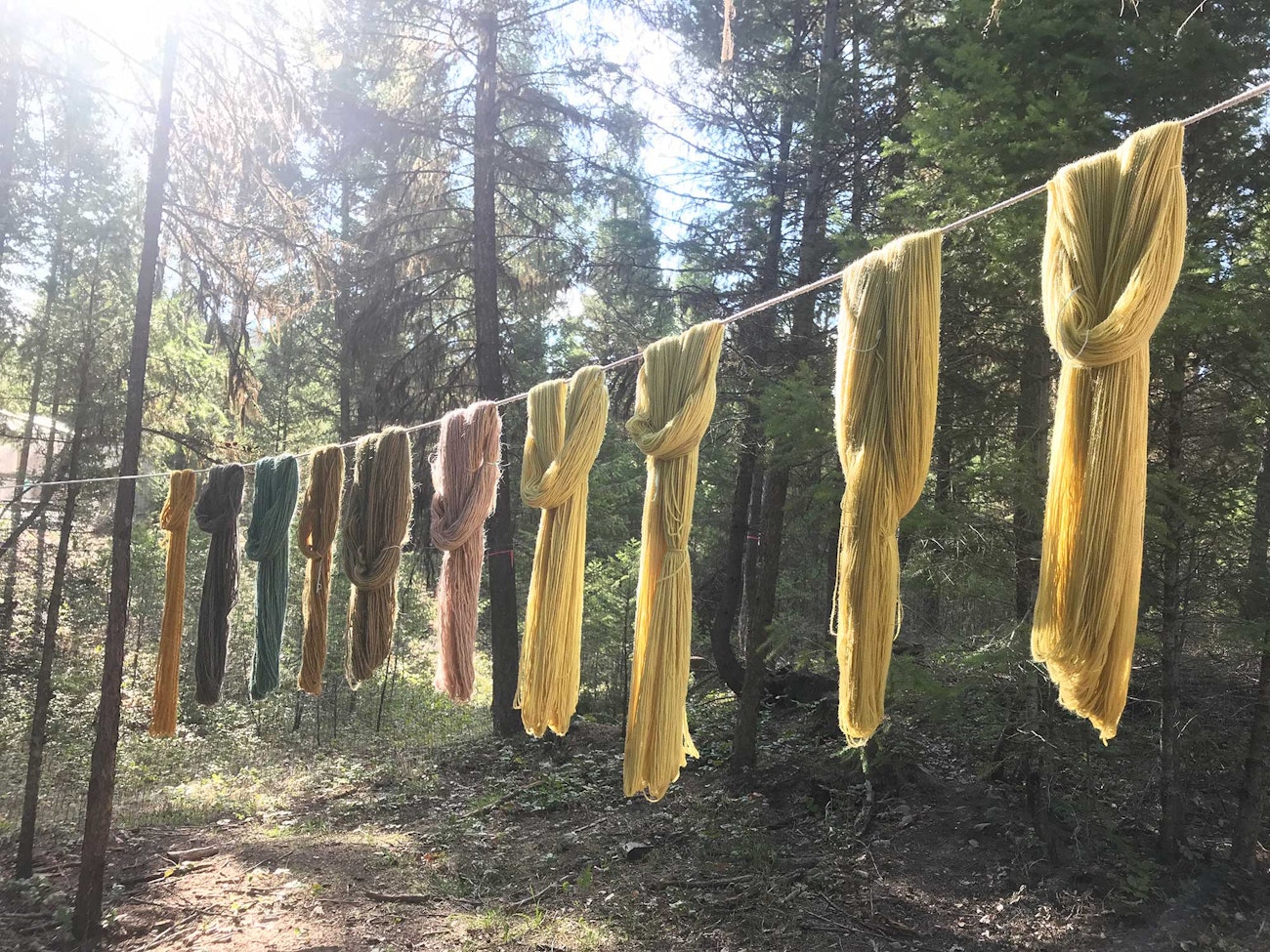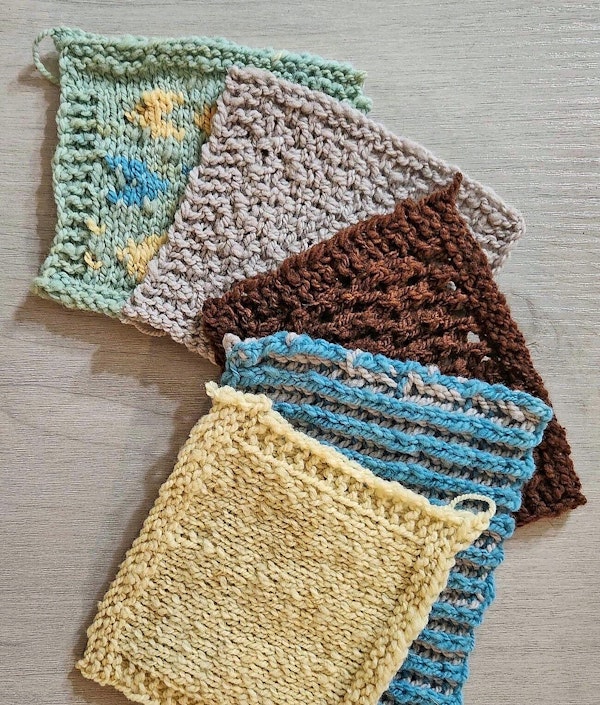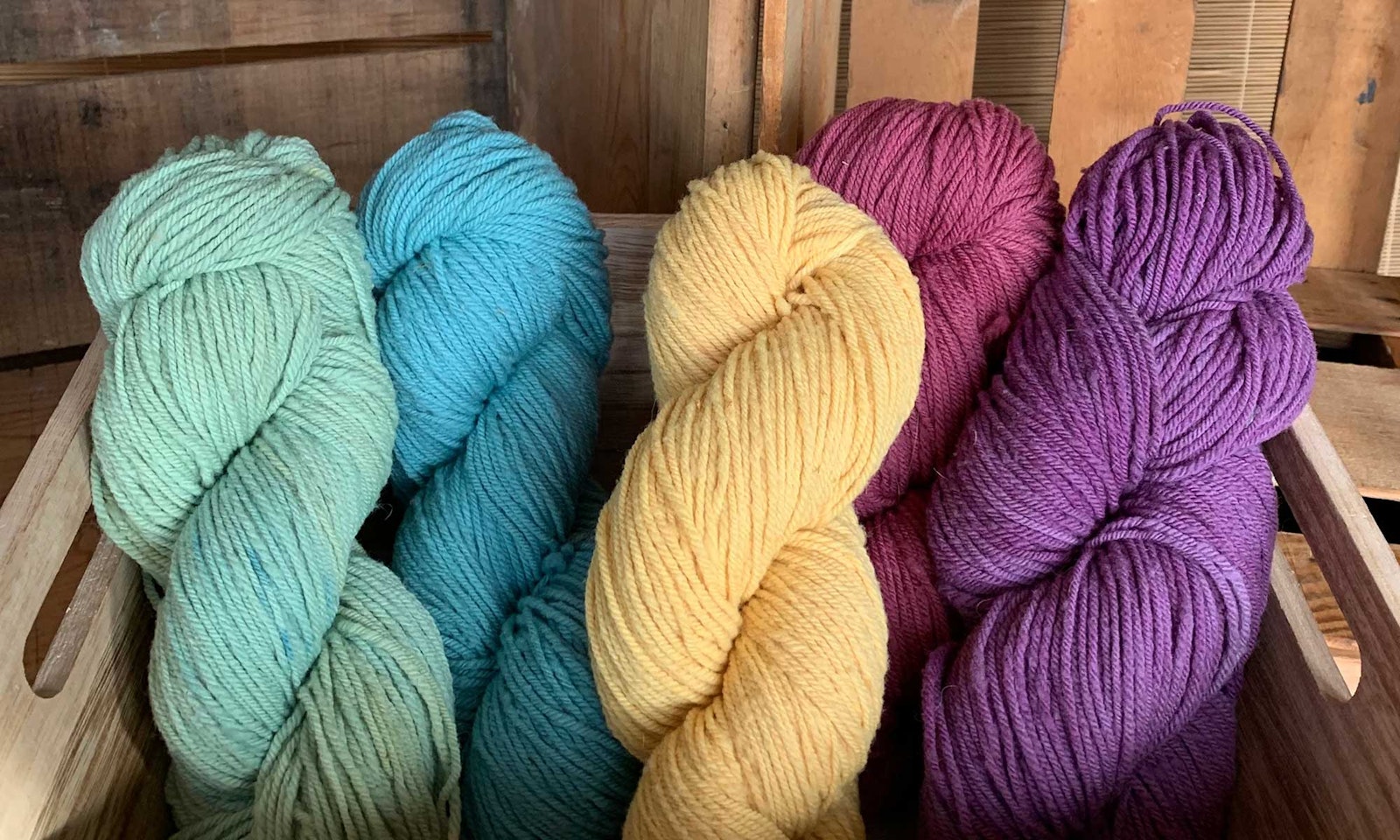Some millspun yarns come with a story spun in, and this one started with Mavis.
Mavis is a gorgeous Targhee ewe raised on the plains of Eastern Montana by Kami Noyes of Ranching Tradition Fibers. Another Montana wool enthusiast, Heather Smith of the Nevermore Ranch 406 in Great Falls, selected Mavis’s fleece when designing what would become a beautiful batch of millspun yarns. After the fleece was grouped with others of similar staple length and quality to create a larger batch, it was sent off to The Wool Mill, where owner LaVonne Stucky processed and spun the wool, and the yarn was born.
One of the best parts of working with small-batch yarns such as this one is really knowing where your wool has been along its journey to become yarn. Here, different women applying their individual skills at each link in our collaborative chain has led to a perfectly imperfect yarn—my favorite kind—with subtle thick and thin spots throughout.
The next step is where I joined the team. Working as a natural dyer is a process that is joyful but slow. Before I play with color, the yarns must take a dip to remove any excess spinning oils from the mill. The lovely characteristics of Targhee wool come into full display as the lines strung between trees in my backyard fill up. Radiantly white, the springy crimp of the fibers is refreshed by their wash, and the yarns plump as they dry, giving us a glimpse of the yarn’s potential.
 Madeline's dyed skeins hanging out to dry. Photo by Madeline Keller-King
Madeline's dyed skeins hanging out to dry. Photo by Madeline Keller-King
Into my cauldrons they go at last! White Targhee wool takes dye exceptionally well. The folks at Nevermore Ranch 406 who designed these yarns wanted bright, saturated colors, so I selected a collection of natural dyes I was confident would deliver: cochineal for deep magenta and purple, Saxon blue indigo for bright blue, onion skins for sunny yellow, and a combination of Saxon blue and sustainably gathered wolf lichen for an aqua that may be my favorite.
The most difficult part of our venture was making myself return all those bright yarns to Heather so she could, in turn, make them available to the rest of the world. Thankfully, I was gifted the extra yardage from the end of the mill run. I’ve been swatching them up as I dream of the soft, squishy cowl they will become.

Colorwork, texture, brioche—so many options! Photo by Maggie Keller
Opening a box of fresh wool is like Christmas: holding the final results of all the careful planning, labor, and an entire year of the sheep growing the wool is a joyful experience every time. Then again, I’m in love with the journey of working with wool as much as the finished products. Small-batch projects mean I get to know the names of my collaborators, from mill to Mavis.
Madeline Keller-King is a natural dyer and fiber artist living in the woods of Northwest Montana with her spouse and family of pups. You can follow her adventures in wool on social media, where she goes by @woolywitchofthewest.

